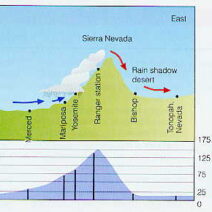New England, a region steeped in history and enveloped by the embrace of nature, offers a climate as varied and intricate as its colonial past. This northeastern corner of the United States is a tapestry woven with seasonal shifts that reflect a rhythmic dance between warmth and chill, sunshine and snow. Within this serene beauty lies a rich metaphor for the changing landscapes of life, presenting an invitation to appreciate both the charm of yesteryear and the fervent necessity of today’s climate consciousness.
At the heart of New England’s climatic allure is its temperate maritime climate, which is influenced by both the Atlantic Ocean and the topography of the land. This delicate balance fosters unpredictable weather patterns, much like the multifaceted histories of its early settlers. The spirit of colonial life is preserved here, where white clapboard houses dot the rolling hills, and the charm of age-old traditions blends harmoniously with the modern world.
As the year unfolds, New England showcases four distinct seasons, each splashed with contrasting hues that create a picturesque canvas. Spring arrives gently, as if coaxing the earth awake from its winter slumber. The landscape is adorned with emergent blossoms and verdant foliage, reminiscent of a painter’s brushstrokes. During this season, rainfall is plentiful, nurturing the soil and fostering the growth of vibrant wildflowers. It is an awakening, echoing the seeds of resilience sown by the region’s early inhabitants, who cultivated the land and cultivated culture.
Summer in New England is akin to the lively gatherings of colonial fairs. The air bursts with warmth and energy, inviting exploration of picturesque coastal towns, verdant forests, and majestic mountain ranges. The sun-drenched days are marked by a palpable vibrancy, as locals and tourists alike flock to the region’s beaches to relish the soothing salt air and the rhythmic lull of ocean waves. However, the heat can often be tempered by sudden thunderstorms, reminiscent of the unpredictable challenges faced by early settlers navigating both nature’s bounty and its caprices.
As the season transitions into autumn, New England transforms into a breathtaking mosaic of color. The foliage explodes in fiery reds, brilliant oranges, and yellows, painting the landscape with a palette that seems to ignite the very soul. This season is not merely a feast for the eyes; it is a time of harvest, echoing the agrarian roots that define much of New England’s history. The ripening of apples and pumpkins marks a period of gratitude, as families gather to share in the bounty of the land. Yet, in this colorful splendor lies a duality: the approaching chill reminds us of the transience of beauty and the inevitability of change.
Winter, meanwhile, cloaks the region in a serene, white silence. The biting cold and snow-laden landscapes evoke a sense of introspection, mirroring the contemplative spirit of those who first populated this land. The long, dark evenings are illuminated by the warmth of hearths, and the air is filled with the scent of wood smoke. Amidst the picturesque snowfall, there lies an urgent reminder of the climate challenges that loom large on the horizon. As temperatures fluctuate and snowfall patterns deviate, the prospect of climate change raises questions about the viability of traditional livelihoods dependent on the natural world.
New England’s climate is further punctuated by its coastal influences. The Atlantic Ocean, with its ceaseless ebb and flow, plays a critical role in moderating temperatures, while also serving as a harbinger of storms. Hurricanes, once rare encounters, are becoming more frequent and intense, symbolizing an escalating threat that calls for the action and awareness reminiscent of the region’s storied past. The sea, a relentless force, reflects both the resilience of the coastal communities and the fragility of their existence, reinforcing the need for sustainable practices that honor both history and the environment.
Moreover, New England’s unique climatic characteristics attract a spectrum of biodiversity, which flourishes across its varied ecosystems. From the lush Appalachian Mountains to the rugged shores of Maine, each ecological niche supports a wealth of flora and fauna. This biodiversity is not merely a visual treat but is essential for ecological balance and acts as a reminder of the interconnectedness between humans and the natural world.
As climatic shifts continue to evolve, New England stands at a crossroads. The land that has cradle the dreams and struggles of generations now faces potential threats that require urgent attention. Thus, the story of New England’s climate becomes a clarion call to preserve its natural splendor for future generations. The enchanting charm of the region beckons one to engage meaningfully with sustainable practices and innovative solutions that prioritize the health of the earth.
In conclusion, the climate of New England is not merely an atmospheric phenomenon; it is a reflection of the rich tapestry of history, culture, and nature intertwined within this beautiful region. The seasonal shifts echo the tale of resilience evident in the colonial past and the ongoing challenges of the present. Embracing this narrative with an eco-conscious spirit creates a path forward that honors the allure of the past while fiercely protecting the future. In this intersection of history and climate, New England remains a profound testament to the enduring connection between people and the environment.







